Among nature’s most spectacular feats of flight, the hummingbird’s ability to hover in place stands as a marvel of evolution. These tiny avian acrobats can remain perfectly stationary in mid-air while extracting nectar from flowers, a skill unmatched in the bird world. Their hovering capability represents one of the most sophisticated flight mechanisms in the animal kingdom, combining extraordinary muscular power, specialized wing structure, and remarkable metabolic efficiency. As we explore the physics, physiology, and evolutionary significance behind this mesmerizing behavior, we’ll discover why hummingbird hovering continues to captivate both casual observers and scientific researchers alike.
The Physics Behind Hummingbird Hovering
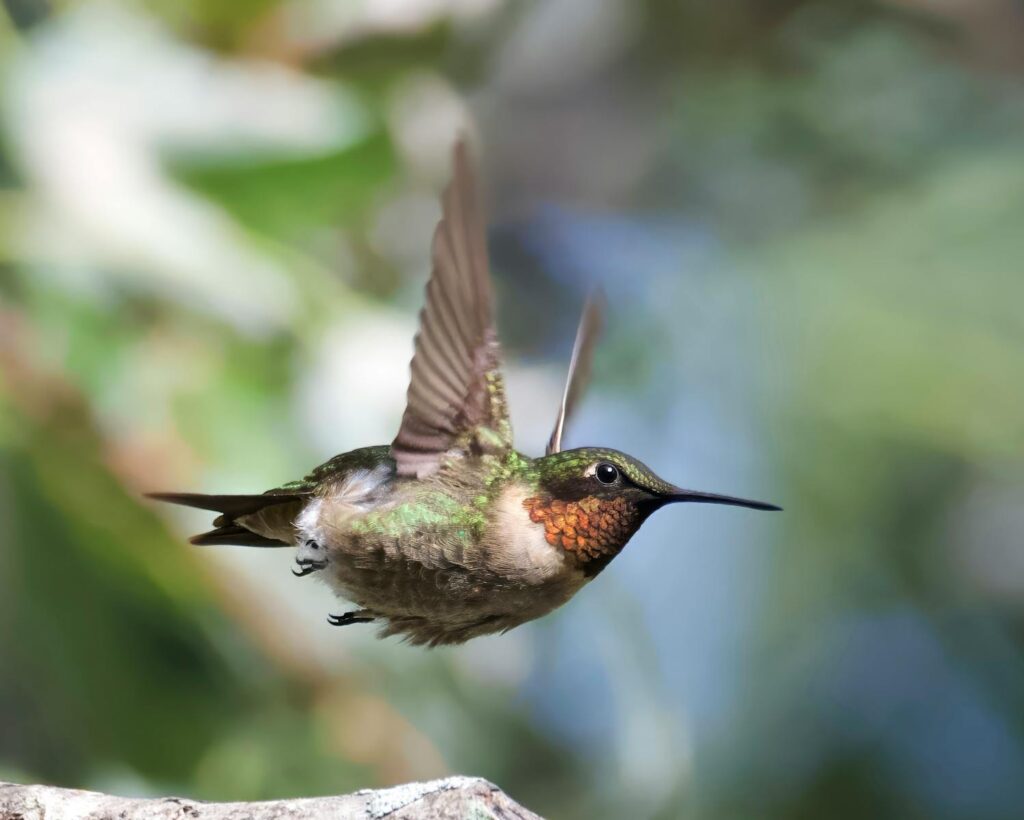
Unlike other birds that generate lift primarily on the downstroke, hummingbirds produce equal lift on both the downstroke and upstroke of their wings. This is achieved through a unique figure-eight wing pattern that allows them to generate lift continuously. Their wings rotate up to 180 degrees at the shoulder joint, essentially turning upside down during the upstroke, which creates an equivalent amount of lift to the downstroke. This specialized movement pattern enables them to remain perfectly stationary while feeding. The physics involved is so complex that engineers have spent decades trying to replicate this efficiency in human-made aerial devices, with hummingbird flight mechanics inspiring advances in drone technology and micro-air vehicles.
Extraordinary Wing Structure
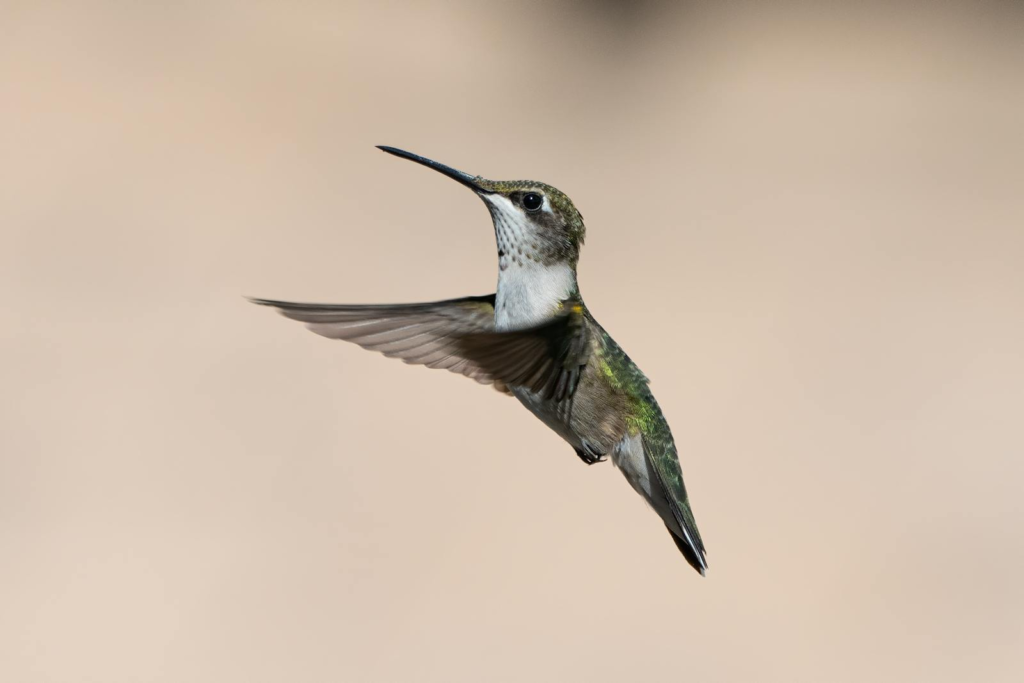
Hummingbird wings possess several unique structural adaptations that make their hovering possible. Unlike typical bird wings, hummingbird wings connect to the body only at the shoulder joint, allowing for almost complete rotation. Their wing bones are also extremely lightweight yet strong, with a reduced number of bones compared to other birds. The wing feathers themselves have specialized structures that reduce turbulence and maintain rigidity during the intense wing beats. Most remarkably, a hummingbird’s wings are proportionally shorter and more rigid than those of other birds, creating the perfect balance between strength and flexibility needed for their distinctive hovering capability. These adaptations collectively enable wing beat frequencies ranging from 50 to 200 beats per second, depending on the species.
Unmatched Wingbeat Frequency
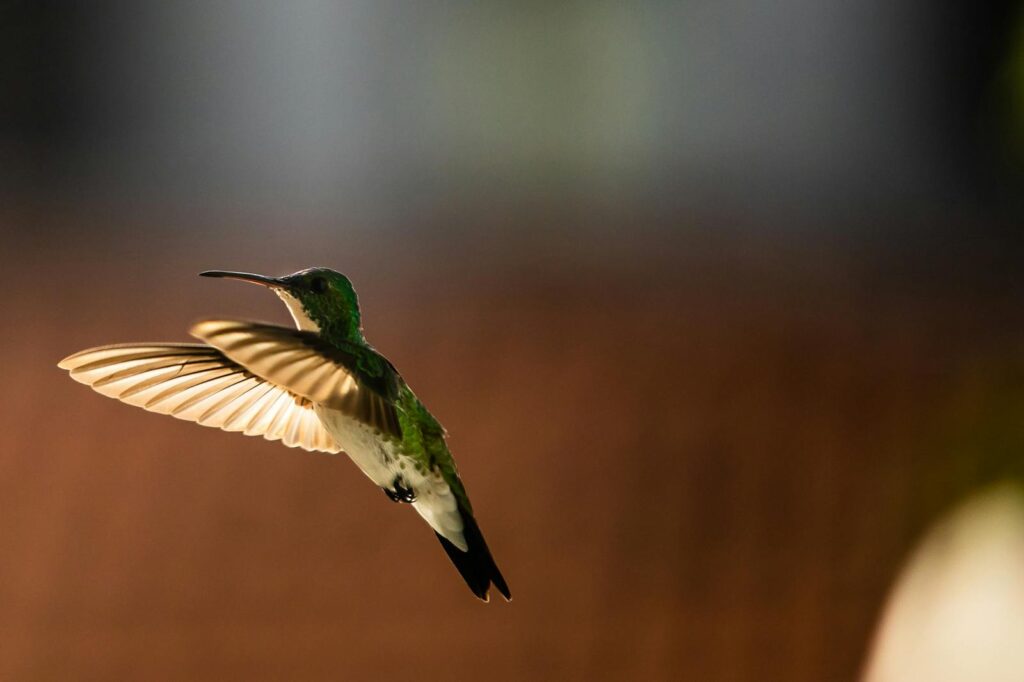
The hummingbird’s ability to beat its wings at astonishing speeds forms the cornerstone of its hovering ability. The Ruby-throated Hummingbird, for example, maintains an average of 53 wing beats per second during normal hovering, a rate that can increase during display flights or evasive maneuvers. This wing speed creates the characteristic humming sound that gives these birds their name, as their wings move fast enough to produce audible frequencies. The smallest hummingbird species, the Bee Hummingbird of Cuba, can achieve the fastest wingbeat of any bird at approximately 80 beats per second during regular flight and up to 200 beats during courtship displays. These rapid movements occur so quickly that the human eye perceives only a blur, requiring high-speed photography or specialized recording equipment to observe the precise wing mechanics.
Supercharged Metabolic Engines

Hovering demands extraordinary energy expenditure, making hummingbirds metabolic marvels in the animal kingdom. Their hearts can beat up to 1,260 times per minute during flight, pumping blood at rates proportionally greater than any other vertebrate. To fuel this metabolic furnace, hummingbirds consume more than their body weight in nectar daily, with some species visiting over 1,000 flowers in a single day. Their digestive systems process this sugary fuel with remarkable efficiency, with some sugars entering their bloodstream within minutes of consumption. Perhaps most impressive is their ability to rapidly convert sugar to energy, with their flight muscles operating at metabolic rates that would cause other animals to overheat, making them among the highest-energy vertebrates on the planet.
Precision Hovering Techniques
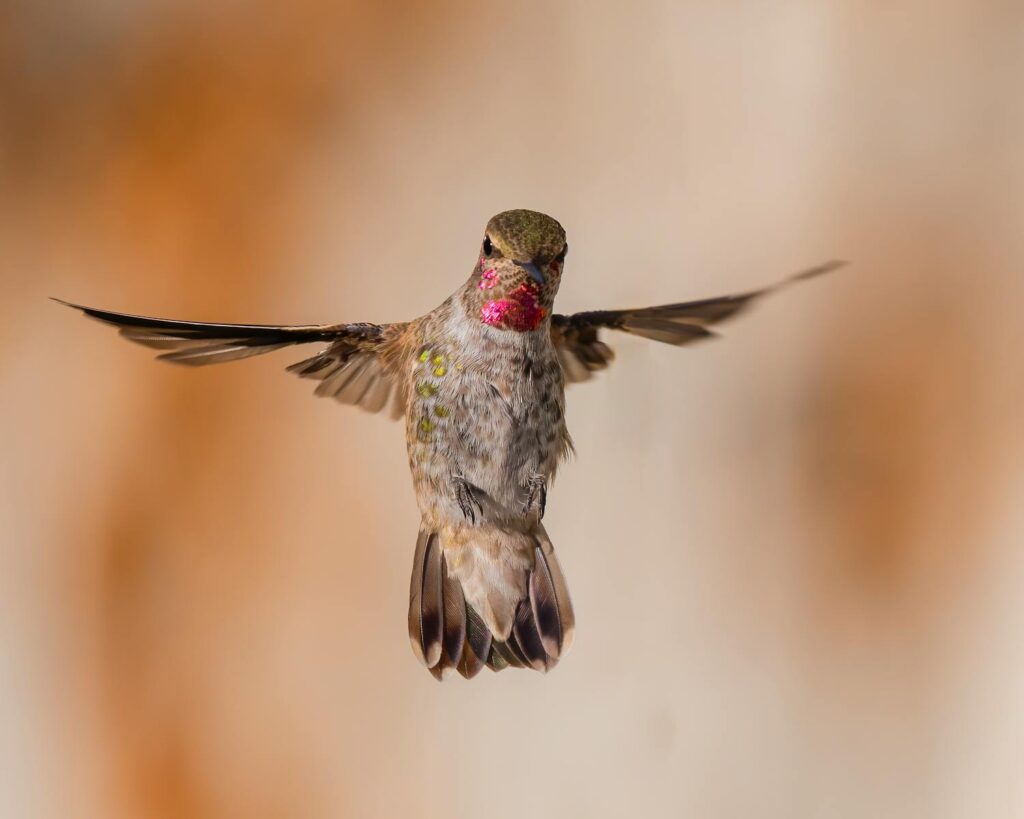
The exactitude with which hummingbirds hover speaks to their extraordinary neurological and muscular control. When feeding at a flower, a hummingbird can hold its body in precisely the same position while extending its specialized tongue up to 20 times per second to lap nectar. This precision remains stable even in windy conditions, as hummingbirds make minute adjustments to wing angle and beat frequency to compensate for gusts. Their visual processing allows them to maintain position relative to moving objects, enabling them to hover at feeders hanging from swaying branches. Research has shown that hummingbirds process visual information differently from other birds, with dedicated neural pathways that prioritize spatial awareness and motion detection, allowing for split-second flight adjustments that maintain their position in space.
Evolutionary Development of Hovering
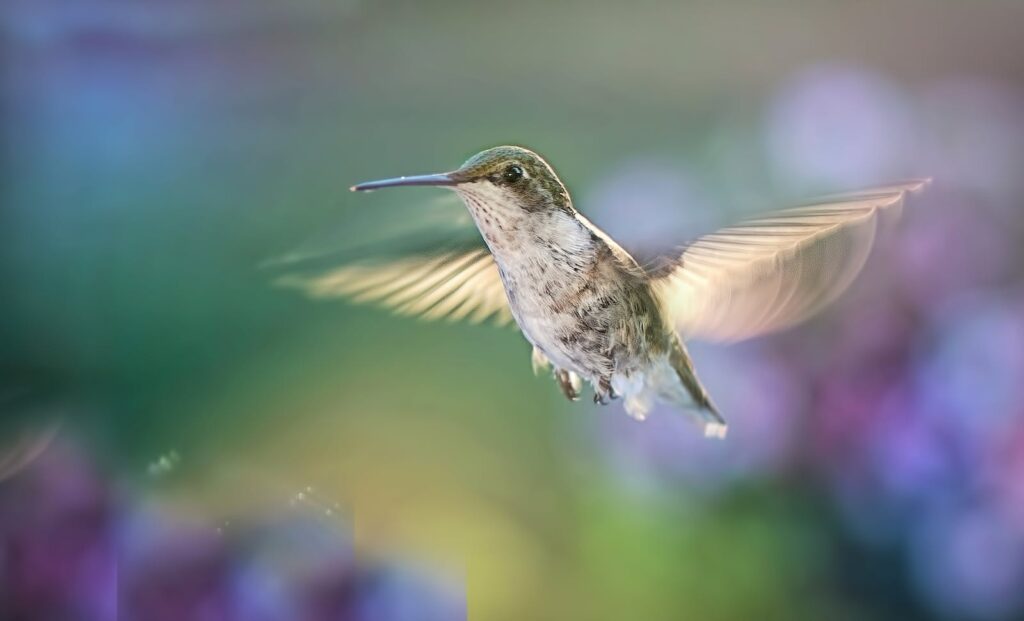
The hovering ability of hummingbirds represents one of evolution’s most specialized adaptations, having developed over approximately 22 million years. Fossil records indicate that ancestral hummingbirds gradually evolved their hovering capabilities as they co-evolved with nectar-producing flowers in the Americas. This co-evolutionary relationship created strong selective pressure for increasingly efficient hovering, as birds that could access nectar more effectively had greater reproductive success. Genetic studies reveal that changes in genes controlling wing development, muscle fiber composition, and metabolic regulation all contributed to the gradual refinement of hovering flight. Interestingly, this evolutionary pathway appears to have occurred only once, making hummingbirds the exclusive masters of true hovering among birds, with no other avian lineage developing comparable abilities.
Unique Muscle Adaptations
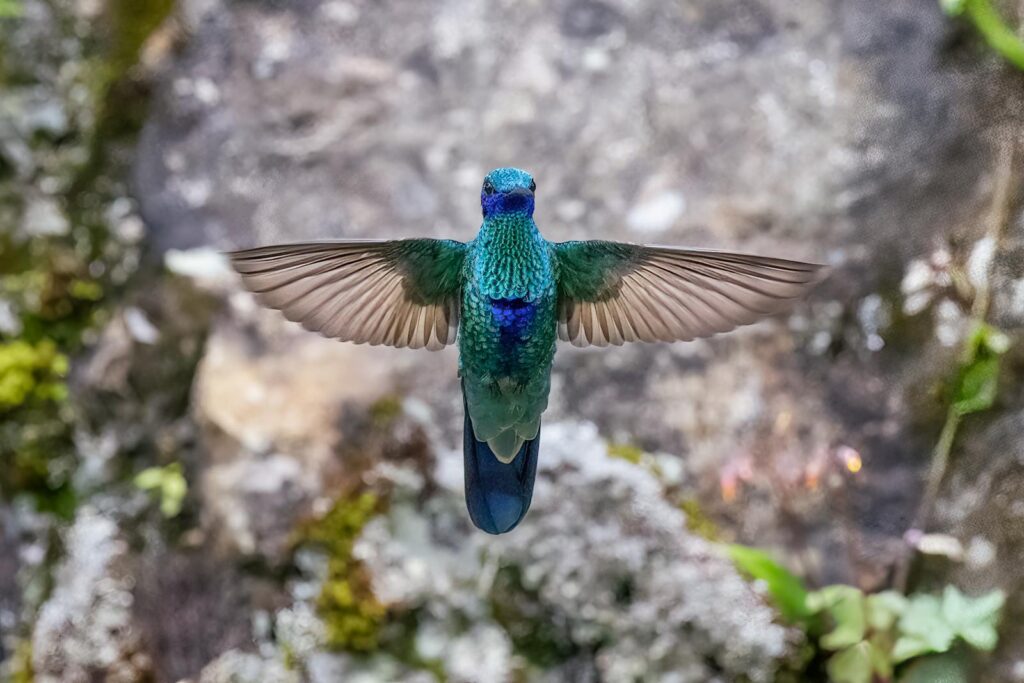
The muscular system of hummingbirds has evolved specialized adaptations specifically for hovering flight. Unlike most birds, whose flight muscles constitute about 15-25% of their body weight, a hummingbird’s flight muscles make up approximately 30-40% of its total body mass. These muscles differ not just in size but in composition, containing unusually high proportions of fast-twitch fibers that allow for rapid contraction and relaxation cycles. The supracoracoideus muscle, which powers the upstroke in most birds, is proportionally larger in hummingbirds, enabling the powerful upstroke necessary for hovering. Additionally, hummingbird flight muscles maintain higher temperatures than other birds, operating optimally at around 40°C (104°F), which enhances enzyme activity and muscle contractility, providing the rapid energy production required for sustained hovering.
Respiratory System Specializations
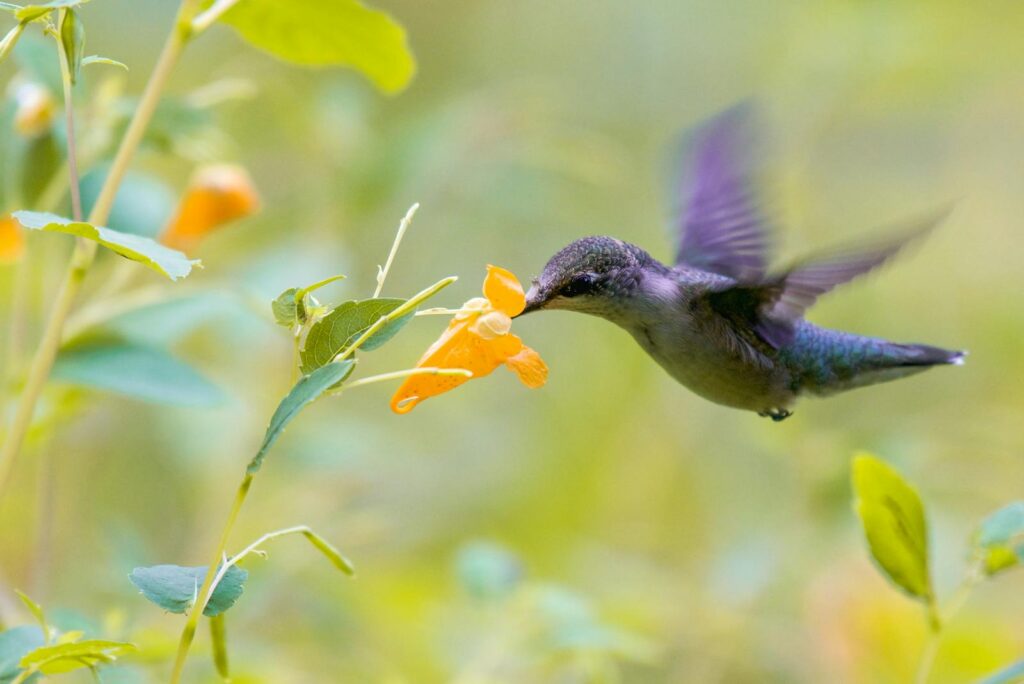
Hovering creates extraordinary oxygen demands, requiring hummingbirds to develop one of the most efficient respiratory systems in the animal kingdom. Their lungs extract approximately three times more oxygen from each breath than human lungs, facilitated by a unique air flow system that moves in one direction through their respiratory system. During intense hovering, a hummingbird’s breathing rate can exceed 250 breaths per minute, supplying oxygen to muscles that consume it at rates higher than any other vertebrate relative to body size. Their specialized hemoglobin molecules also have a higher oxygen affinity than those of other birds, allowing more efficient oxygen transport through the bloodstream. These respiratory adaptations work in concert with their cardiovascular system to sustain the extraordinary metabolic demands of hovering flight.
Neurological Control Systems
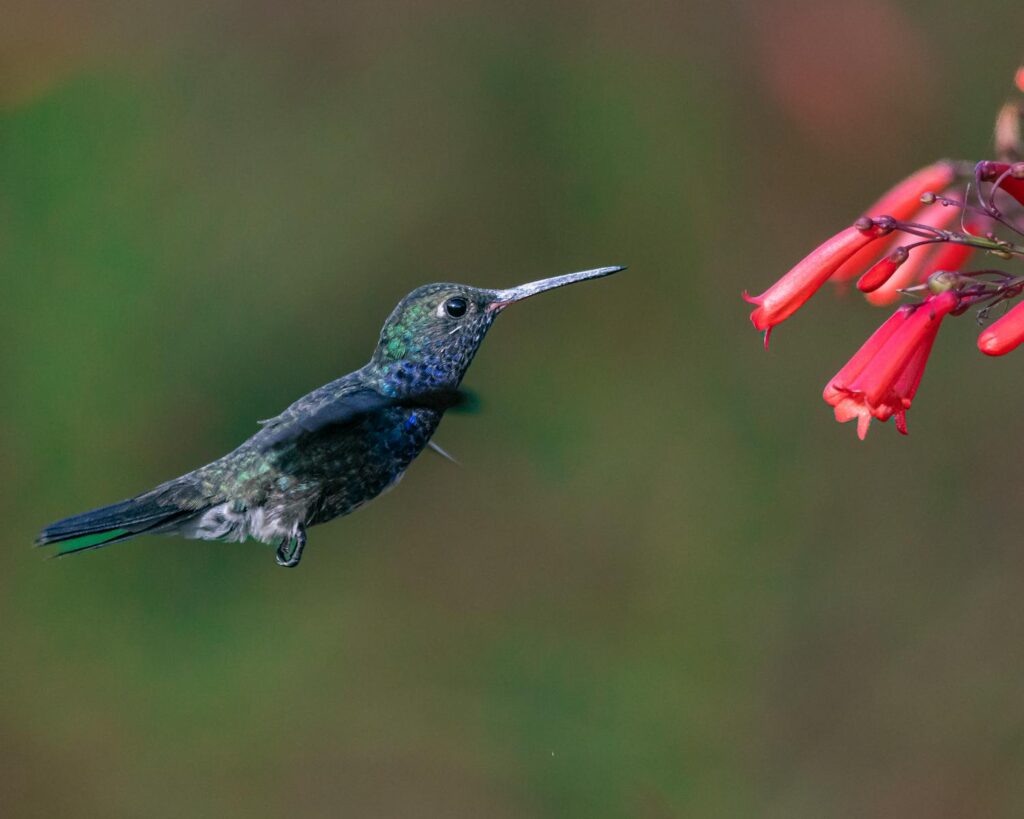
The neural circuitry controlling hummingbird flight represents one of the most sophisticated motor control systems in nature. Research using miniaturized neural recording devices has revealed that hummingbirds possess specialized brain regions dedicated to processing spatial information and coordinating the precise wing movements required for hovering. These neural pathways integrate visual information with proprioceptive feedback (body position awareness) at speeds fast enough to make millisecond adjustments to wing position and angle. The cerebellum, which coordinates complex movements, is proportionally larger in hummingbirds than in non-hovering birds, allowing for the exquisite coordination of their rapid wing movements. Perhaps most remarkably, these birds possess neural timing circuits that can regulate muscle contractions at frequencies faster than those found in any other vertebrate, enabling the precisely timed wing beats essential for stable hovering.
Hovering in Different Species
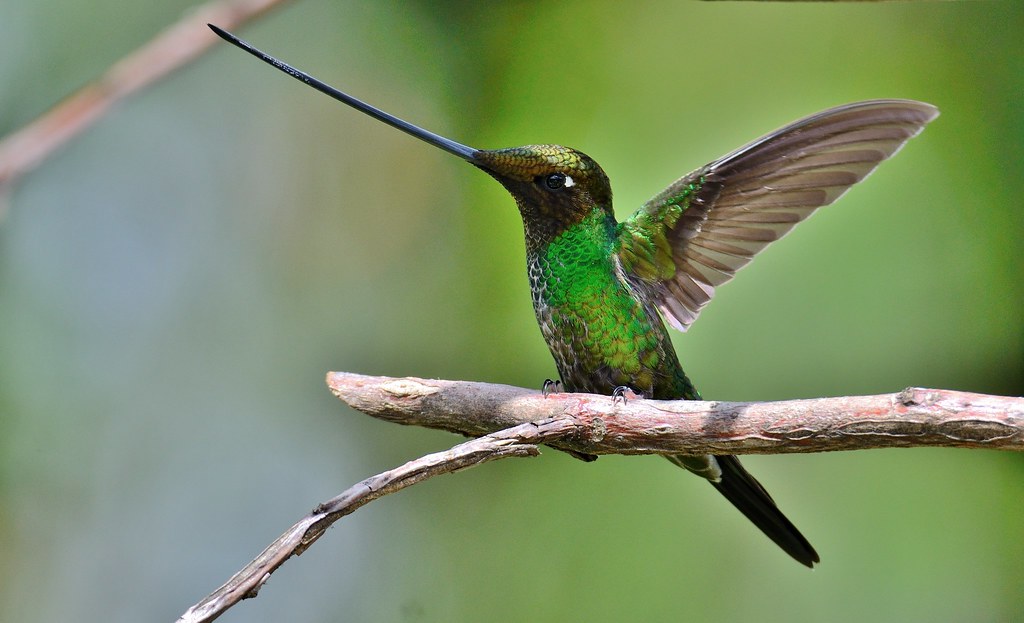
Among the 338 recognized hummingbird species, hovering abilities show fascinating variations that reflect different evolutionary pressures and ecological niches. The Sword-billed Hummingbird, with its extraordinarily long bill evolved for feeding from specific trumpet-shaped flowers, must master particularly precise hovering to effectively extract nectar without the stability advantage of a shorter bill. The Giant Hummingbird, weighing up to 24 grams (nearly ten times the weight of the smallest species), hovers with slower wing beats but greater power, demonstrating how the physics of hovering scales with body size. High-altitude specialists like the Ecuadorian Hillstar, which lives at elevations up to 5,200 meters (17,000 feet), have evolved hovering techniques that compensate for the thinner air, using broader wings and modified wing movements to generate sufficient lift in the oxygen-poor environment.
Hovering for Defense and Display
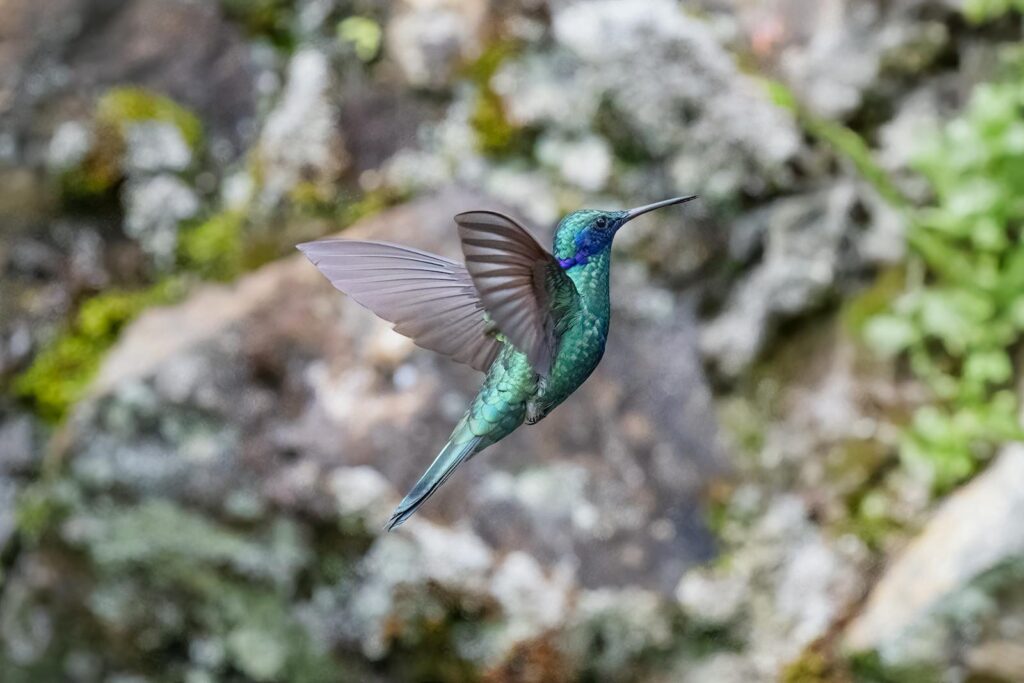
Hovering serves purposes beyond feeding, playing crucial roles in territorial defense and mating displays. Male hummingbirds often engage in elaborate aerial displays that showcase their hovering prowess, with some species performing complex patterns of ascent, descent, and directional changes while maintaining perfect hover control. The Rufous Hummingbird performs a distinctive U-shaped dive and recovery during courtship, requiring extraordinary control to transition from high-speed descent to precise hovering in split seconds. When defending territories, hummingbirds use hovering as an intimidation tactic, facing opponents directly while suspended in air, sometimes just inches apart, before engaging in aerial chases. These behaviors demonstrate that hovering capabilities serve multiple evolutionary advantages beyond feeding efficiency, contributing to reproductive success through mate attraction and resource defense.
Technological Inspirations from Hummingbird Hovering
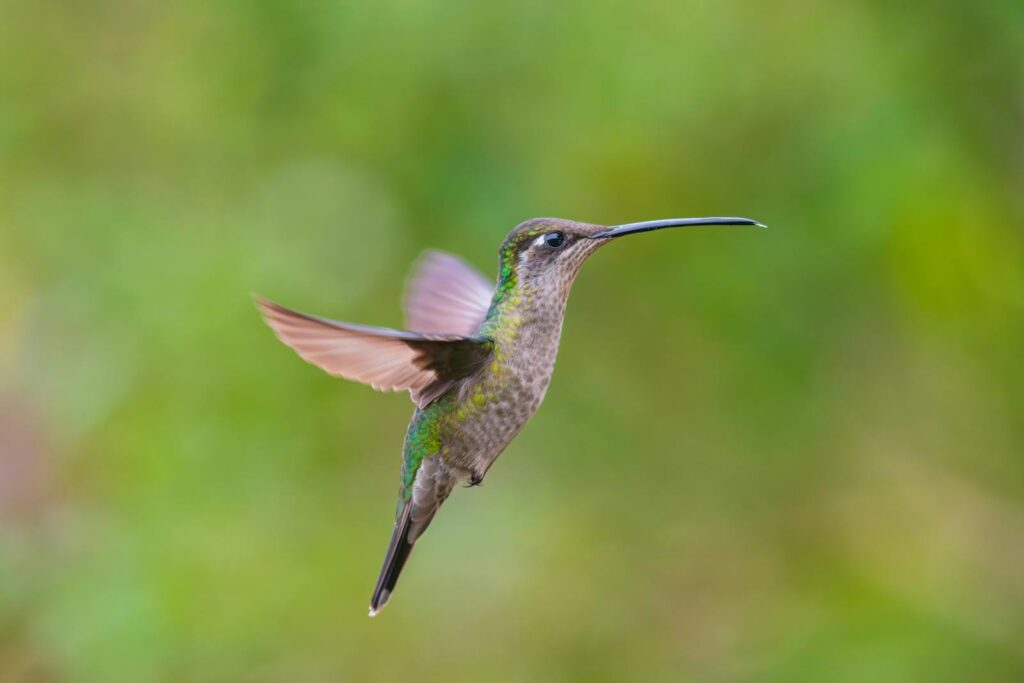
The remarkable efficiency of hummingbird hovering has inspired significant advances in drone technology and micro-air vehicle development. Engineers at institutions like Stanford University and the University of California have developed bio-inspired drones that mimic hummingbird wing movements, creating more energy-efficient flying robots capable of stationary flight. The AeroVironment Nano Hummingbird, developed for DARPA, became one of the first operational ornithopters that could hover in place using flapping wings rather than rotors. These technologies have applications ranging from search and rescue operations in confined spaces to unobtrusive wildlife observation. Beyond aviation, understanding the energy efficiency of hummingbird hovering has influenced developments in energy storage systems and miniaturized motor design, demonstrating how natural selection has engineered solutions that continue to outperform human technology in certain respects.
Challenges to Hovering Ability
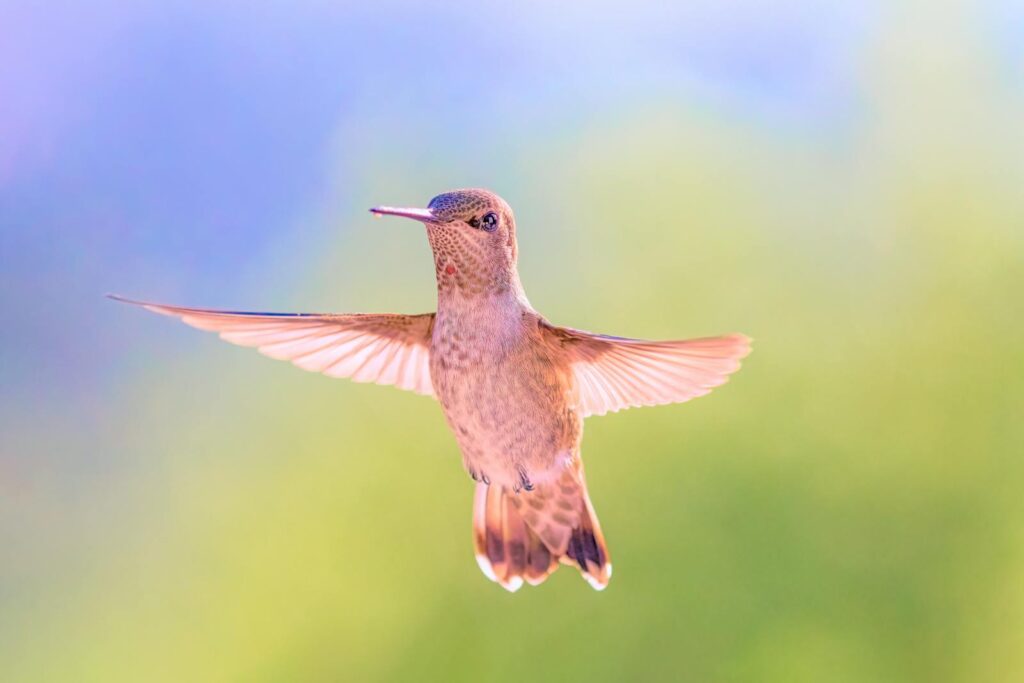
Despite their extraordinary adaptations, hummingbirds face significant challenges that can compromise their hovering abilities. Sudden temperature drops can rapidly reduce muscle performance, as their high-temperature muscle systems operate within narrow thermal parameters. During cold nights, many species enter torpor (a hibernation-like state) to conserve energy, requiring a warm-up period before regaining full hovering capacity in the morning. Parasitic infections, particularly from mites that damage wing feathers, can disrupt the precise aerodynamics required for stable hovering. Climate change presents perhaps the most significant long-term threat, as shifting flowering patterns may disrupt the synchrony between hummingbird migration and nectar availability, potentially forcing birds to hover for longer periods searching for food with fewer resources available. Understanding these vulnerabilities is crucial for conservation efforts aimed at protecting these aerial marvels.
The hummingbird’s ability to hover in place represents one of nature’s most extraordinary achievements—a perfect integration of specialized anatomy, physiology, and behavior resulting from millions of years of evolutionary refinement. These tiny birds challenge our understanding of biological limits, demonstrating how natural selection can produce abilities that seem to defy physical constraints. As we continue to study the intricate mechanisms behind their hovering flight, hummingbirds not only enchant us with their beauty and aerial prowess but also offer valuable insights that advance our scientific knowledge and technological capabilities. In their precision, efficiency, and seemingly effortless mastery of the air, hummingbirds remind us that even the smallest creatures can achieve remarkable feats through evolutionary adaptation.
